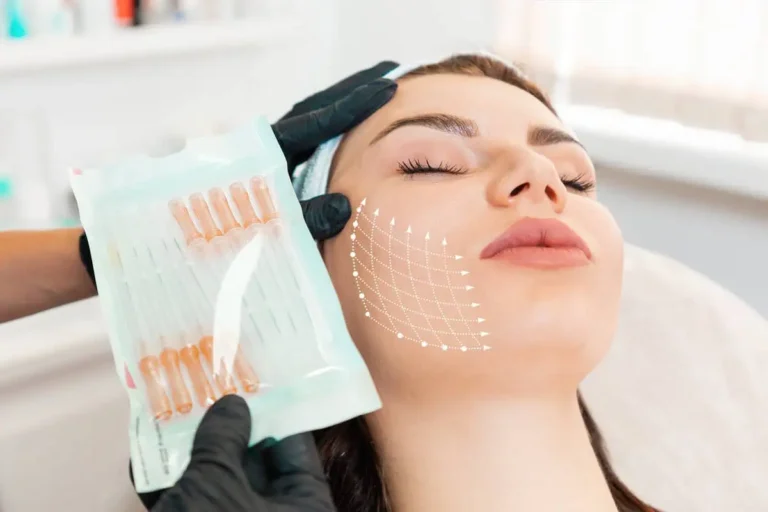Table of Contents
Neurotoxins have become a mainstay in cosmetic treatments, offering a straightforward way to soften wrinkles and fine lines. Options like Botox, Dysport, Xeomin, and Jeuveau each have their own features, making them suitable for different needs. But what sets these treatments apart? Here’s a look at how they work, the differences between them, and what you should know before making a choice.
What Are Neurotoxins?
Neurotoxins like Botox, Dysport, Xeomin, and Jeuveau all rely on a powerful ingredient: botulinum toxin type A. This substance targets nerve signals that cause muscles to contract. By temporarily blocking these signals, neurotoxins relax those tiny muscles that create wrinkles, leaving your skin looking smoother and refreshed.
Botulinum toxin is produced by a bacterium called Clostridium botulinum, which sounds intense, but in tiny amounts, it has incredible benefits. Instead of causing the serious condition known as botulism, this purified version is used to target and soften wrinkles without the risks.
Meet the Neurotoxins: Botox, Dysport, Xeomin, and Jeuveau
Botox (OnabotulinumtoxinA)
Botox has been a go-to choice since its approval in 2002, and it’s no surprise why. Known for its consistency, Botox delivers reliable results. It typically takes about 3 to 7 days to see the full effects, and the smoother skin lasts around 3 to 4 months. Its formulation includes stabilizing proteins that keep it localized, making it ideal for precise treatments like frown lines and crow’s feet.
Dysport (AbobotulinumtoxinA)
Approved in 2009, Dysport offers a slightly different experience. Thanks to its smaller protein size, it spreads more easily under the skin. This makes it perfect for covering larger areas like the forehead, where a more diffused effect can be beneficial. Dysport’s results can show up in as little as 2-3 days, and many people find that it lasts for about 4 months or sometimes even longer. However, its broader spread might make it less precise for small, targeted areas.
Xeomin (IncobotulinumtoxinA)
Xeomin, which hit the market in 2011, stands out for its “naked” formula—no accessory proteins, just pure botulinum toxin. This can lessen the chance of developing resistance, which some people experience with long-term use of Botox or Dysport. Xeomin’s effects appear within 3 to 4 days, and results last for about 3 to 4 months, similar to Botox.
Jeuveau (PrabotulinumtoxinA)
As the newest player, approved in 2019, Jeuveau is often marketed as a trendy and budget-friendly alternative to Botox. It’s designed solely for aesthetic purposes, which sets it apart from its competitors, who also have medical applications. The results usually start to show in 3-5 days and can last about 3 to 4 months. Its appeal lies in offering a similar outcome to Botox but at a potentially lower price point, especially for younger users.
Get More Details on Neurotoxin Treatments for Wrinkles and Fine Lines
How They Work: The Science Behind Neurotoxins
Neurotoxins do their magic by blocking acetylcholine, a neurotransmitter that triggers muscle contractions. Typically, when your nerves send a signal, acetylcholine helps your muscles tighten. Neurotoxins like Botox step in and keep this process from happening so those targeted muscles relax. The end result? Fewer wrinkles and smoother skin.
Each neurotoxin’s unique formulation affects how it spreads under the skin and how precise the results can be. For example, Xeomin’s pure formula is ideal for those who might have built up resistance to the proteins in Botox, while Dysport’s formulation helps it spread further, making it better suited for larger areas like the forehead.
Comparing the Neurotoxins: Key Differences
Formulation and Proteins
Botox, Dysport, and Jeuveau all contain protective proteins that stabilize their formulations. These proteins can sometimes lead to the development of resistance if used frequently over time. Xeomin, however, is protein-free, which could be a better choice for those looking for a simpler formulation.
Spread and Potency
Dysport’s smaller protein size means it spreads more easily, making it ideal for broader areas. Meanwhile, Botox and Xeomin tend to stay more localized, which allows for precise targeting, such as around the eyes or forehead lines. Jeuveau, on the other hand, behaves similarly to Botox, offering a balance between spread and precision.
Onset and Duration
Here’s what to expect in terms of how fast results appear and how long they last:
- Botox: Results in 3-7 days, lasting about 3-4 months.
- Dysport: Results in 2-3 days, lasting around 4 months.
- Xeomin: Results in 3-4 days, lasting about 3-4 months.
- Jeuveau: Results in 3-5 days, lasting about 3-4 months.
Finding the Right Neurotoxin for You
Choosing the right neurotoxin often depends on the area you want to treat, your previous experiences, and how quickly you’d like to see results. Dysport is great for covering larger areas like the forehead, while Botox and Xeomin are excellent for more precise areas. Xeomin might be a better fit if you’ve found that other neurotoxins aren’t working as well for you anymore due to resistance.
Your injector’s experience also makes a difference. A skilled provider will know how to customize your treatment, balancing the type of neurotoxin and the amount used to achieve your desired look.
Have a Look at our Neurotoxin Options for Fine Lines
Side Effects and Aftercare
Most people tolerate neurotoxin injections well, but some side effects can happen, like bruising, redness, or swelling at the injection site. Mild headaches can occur, but these symptoms are usually temporary. To get the best results, avoid vigorous activities and try not to rub the treated area right after your session. This keeps the neurotoxin from spreading to unwanted areas.
Frequently Asked Questions
- How do the costs compare? Generally, the total price is similar for all options, even though Dysport can seem cheaper per unit. The difference comes from the number of units needed for each treatment area.
- Can you become resistant to Botox? Yes, it’s possible for some to develop resistance to Botox over time. If this happens, Xeomin might be a good option since it doesn’t include the same stabilizing proteins.
- How often do you need treatments? Most people find that treatments every 3-4 months keep their results looking fresh, though this can vary depending on your metabolism and how quickly your body breaks down the product.
Takeaway
Each option has its unique benefits, making it easier than ever to find a solution that matches your needs for facial rejuvenation. If you’re considering neurotoxins for wrinkles and want to explore how injectables can enhance your look, the team at The Aesthetics Loft with Hajrie Sulejmani is ready to guide you through the process. Whether you’re new to aesthetic services like Botox in Milford, CT, or looking to maintain your results with Dysport, their experts are here to help you achieve your aesthetic goals.
Schedule an appointment to discover your ideal treatment today and start your journey toward smoother, more youthful skin.



